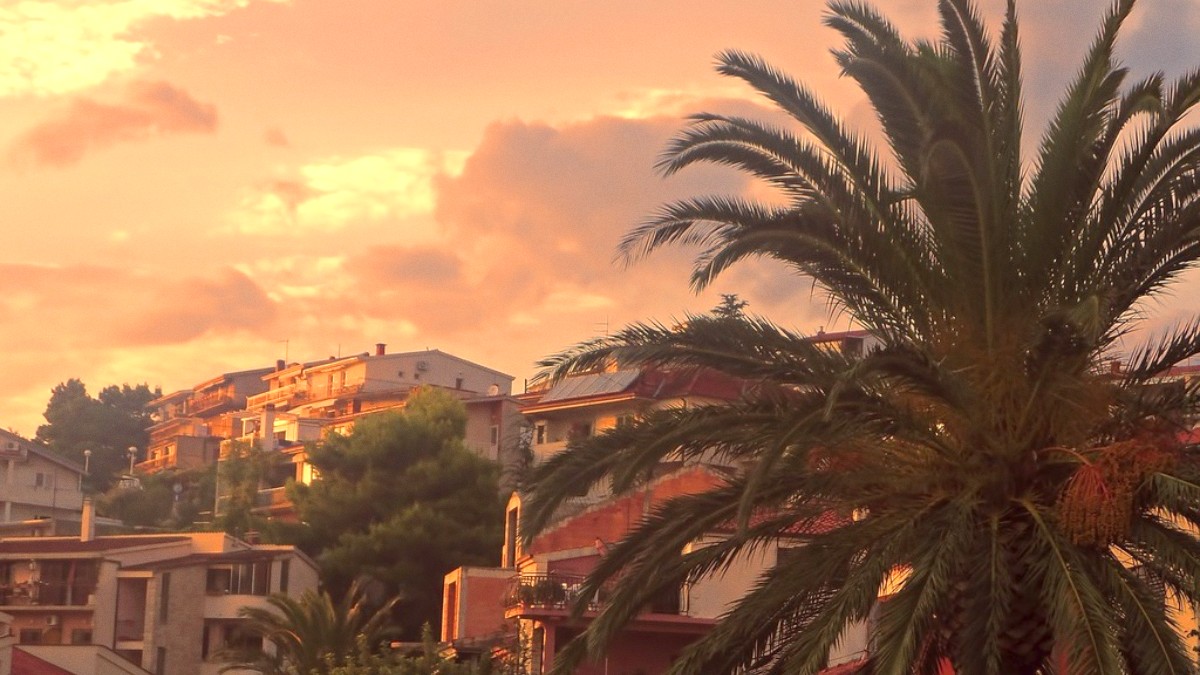
Croatia
Dalmatian cuisine draws from Mediterranean influences. It mainly uses fresh, local ingredients like olive oil, seafood, aromatic herbs, and vegetables. Venetian and Austro-Hungarian periods also influence some dishes.
Dining is typically a relaxed, social affair. Expect unhurried service.
Seafood (sea bass, sardines), olive oil, garlic, parsley, rosemary, bay leaf, oregano, basil. Common vegetables: Swiss chard, potatoes, tomatoes.
Coastal Dalmatia, like Makarska, emphasizes seafood. Inland areas feature more meat-centric dishes. Simple, fresh preparation remains consistent.
Reservations advised in high season. Lunch: 1-3 PM. Dinner: 7-10 PM+. Table water is usually bottled and paid for. Tap water is safe; ask for 'voda iz pipe'.
Slow-cooked meat (lamb, veal, or octopus) with potatoes under a bell-shaped lid. Order 3-4 hours in advance at traditional 'konobas'.
A traditional, hearty meal.
Freshly caught fish, simply grilled with olive oil, garlic, and parsley. Widely found at seafood restaurants along the Riva.
A local staple for seafood lovers.
Risotto with squid ink, typically featuring squid or cuttlefish. A well-known Dalmatian specialty.
A unique, flavorful experience.
Ćevapi: Grilled minced meat sausages in flatbread. Burek: Flaky pastry with various fillings.
Pizza: Widely available, quick slices. Palačinke: Croatian crepes with sweet or savory fillings.
Upscale experiences with refined menus. Look for restaurants at 4-5 star hotels or waterfront spots focusing on gourmet seafood.
Konobas (taverns): Traditional, rustic, authentic Dalmatian dishes. Many family-run. Restaurants: Broader menus including seafood, meats, pasta, pizza.
Pekarnice (bakeries): For burek, pastries. Fast Food/Grill Stands: Ćevapi, burgers. Local Market (Pazar): Fresh produce, cheeses, local delights.
Mainly Italian cuisine (pizza, pasta). Some scattered Asian or other European restaurants exist.
Dalmatian and Croatian cuisine dominates.
Makarska's dining scene mainly showcases its local flavors.
Explore local specialties for the best experience.
Increasingly available. Inform staff clearly.
Awareness is growing. Use translation cards.
Very limited availability. Consider self-catering.
Translation apps or cards aid clear communication.
Slow-cooked dish unique to Dalmatia. Order in advance. Best enjoyed in a group, a social event.
A deeply rooted culinary tradition.
Many restaurants along the Riva offer tables with stunning sea views.
Creates a memorable dining ambiance.
Located near the main bus station. Daily operations, mornings for best selection.
Adjacent to the green market. Daily fresh catch from local fishermen.
These options are increasingly available, especially in larger restaurants in tourist areas.
Awareness of gluten-free and other dietary restrictions is growing.
These options are very limited. Croatia is not a major destination for certified halal or kosher food.
These are naturally gluten-free and often suitable for various diets.
A safe and delicious choice.
Always communicate severe allergies to staff to prevent cross-contamination.
Diners' safety is paramount.
Some restaurants, especially newer or larger ones, may accommodate wheelchair access. Older establishments in the Old Town might pose challenges due to narrow streets and steps.
Many pizzerias and casual restaurants are welcoming to families with children. Beachfront restaurants often have outdoor seating suitable for kids.
Outdoor seating areas in many restaurants may permit well-behaved dogs. It's always polite to ask the staff before bringing your pet in.
Embrace the slow pace of dining. It is a part of the cultural experience.